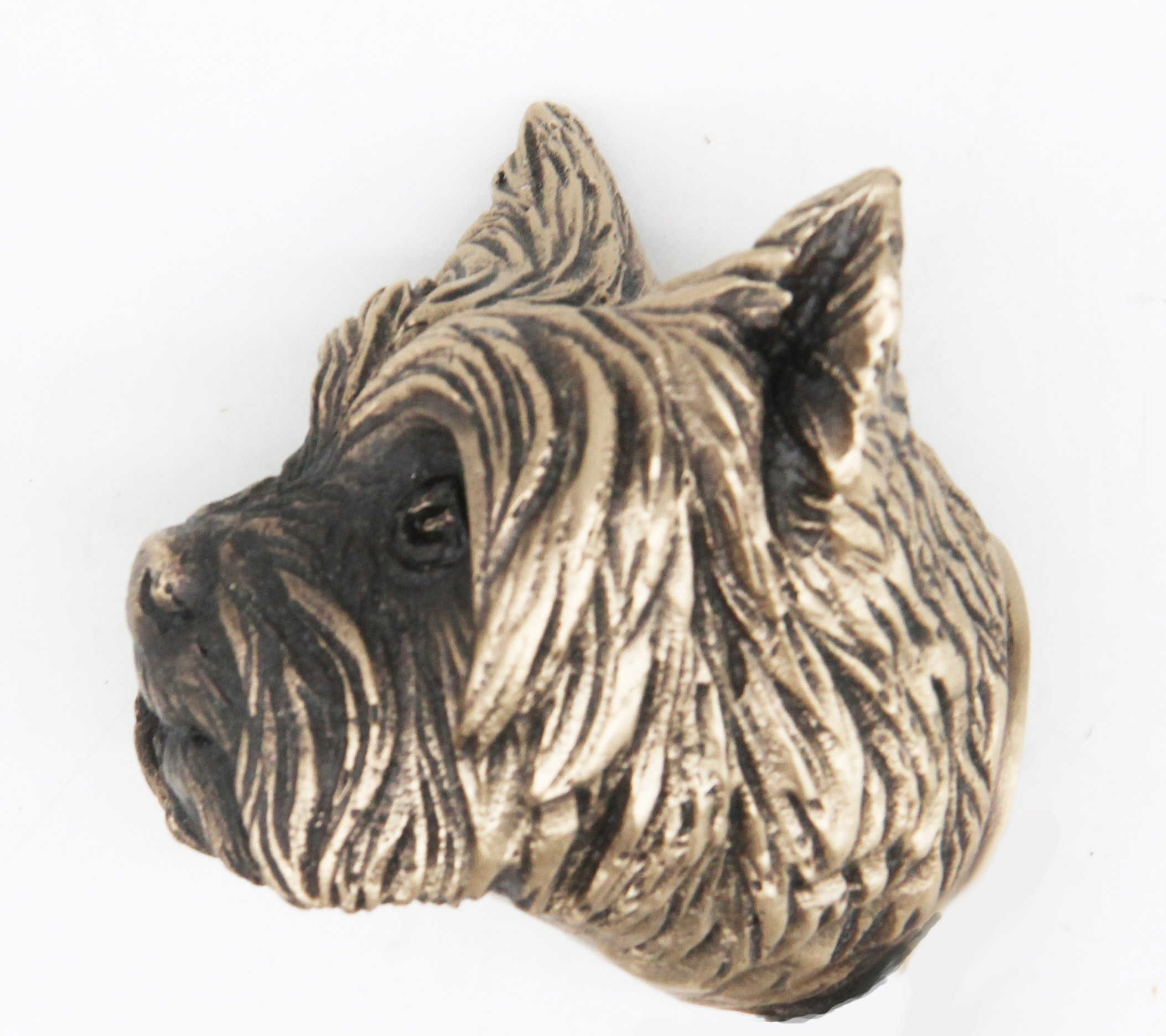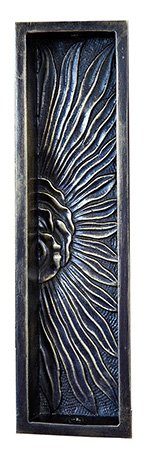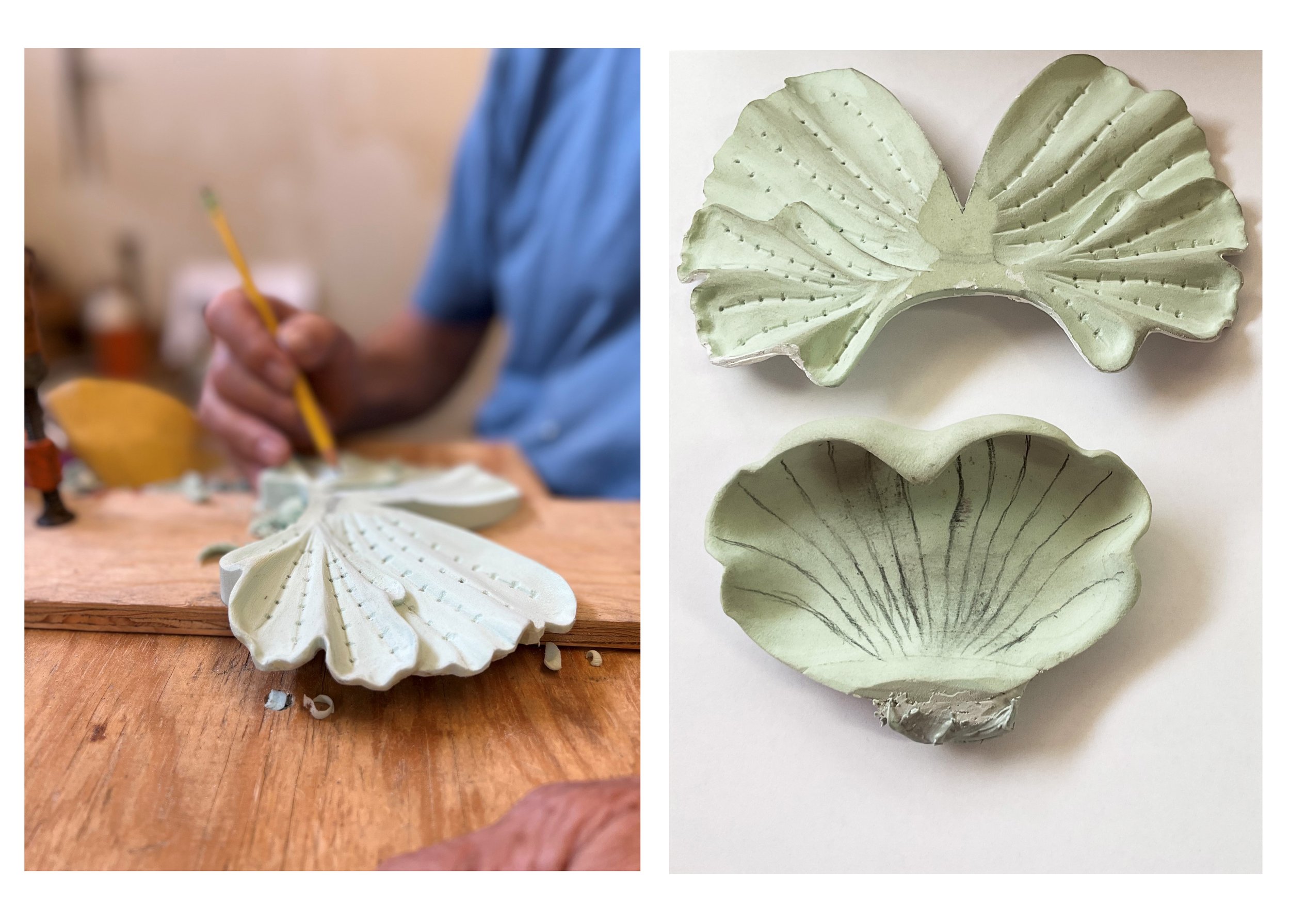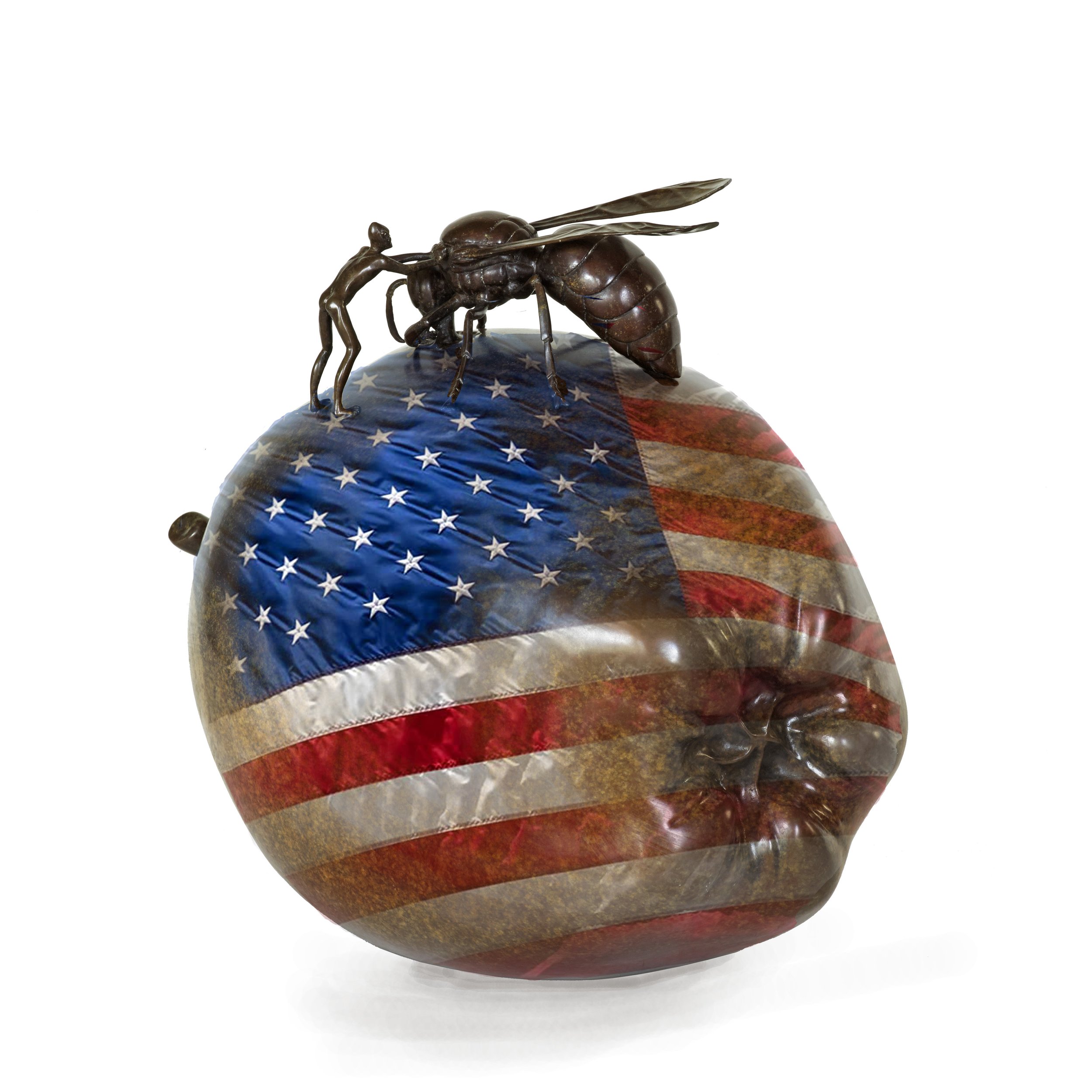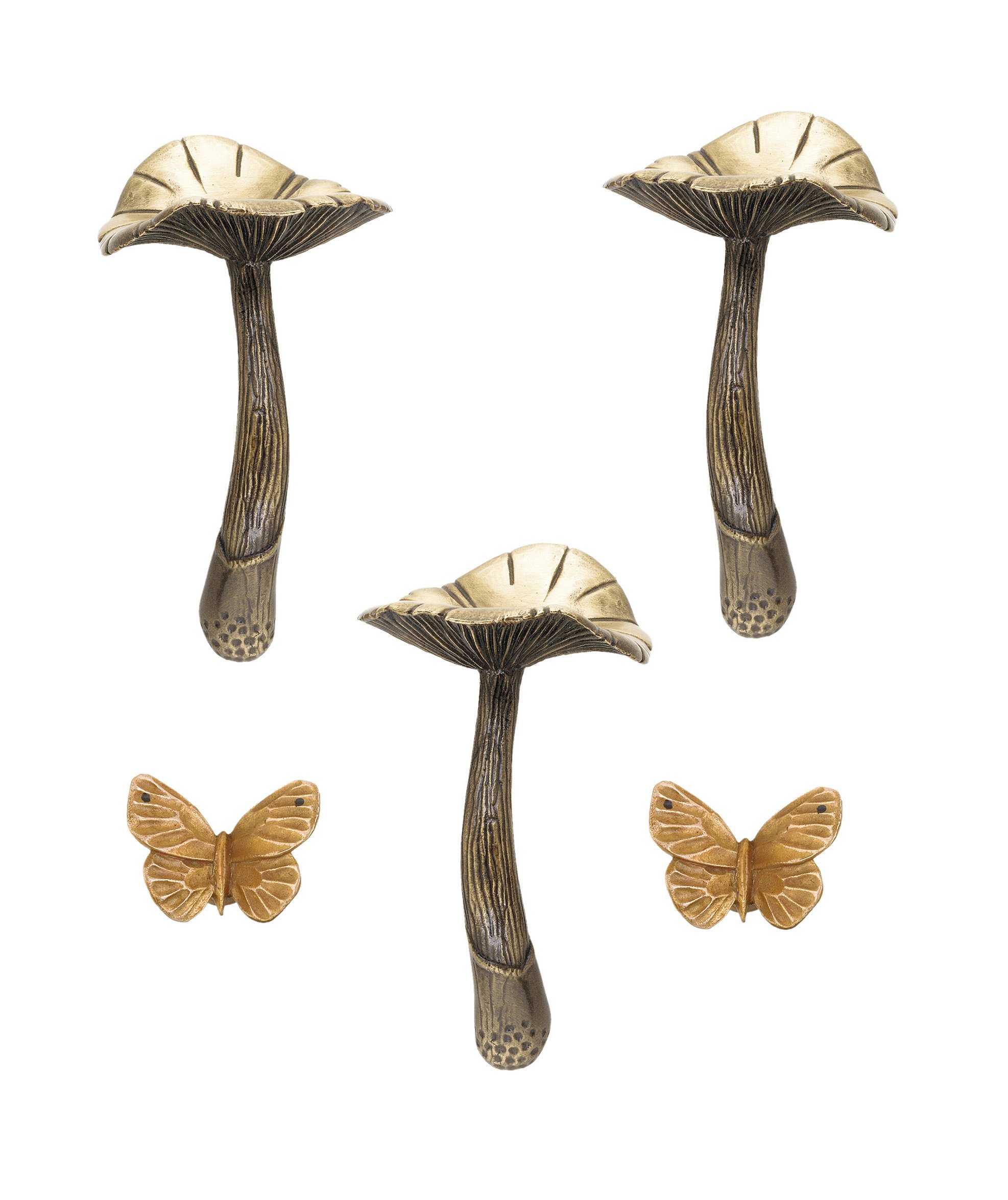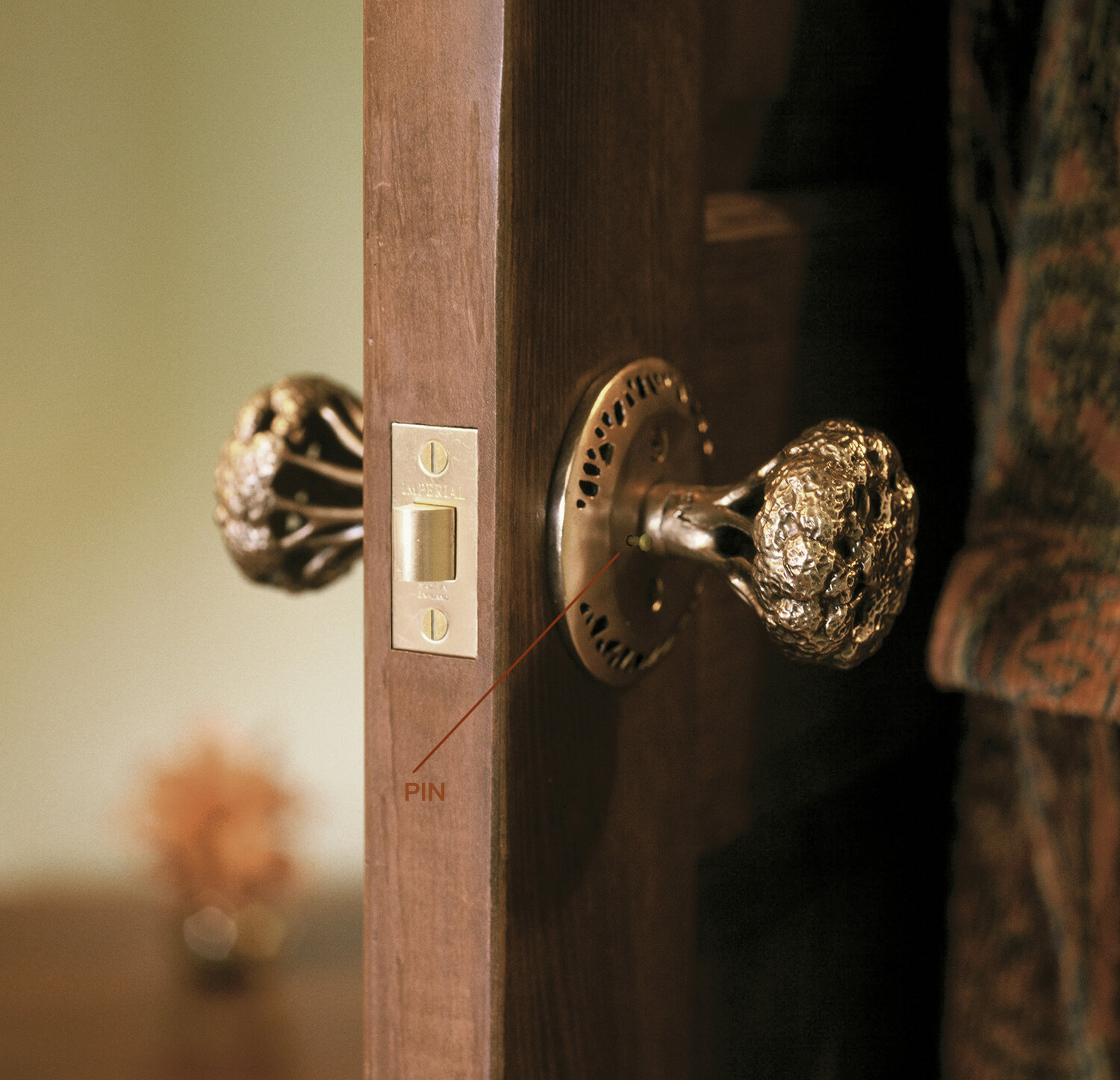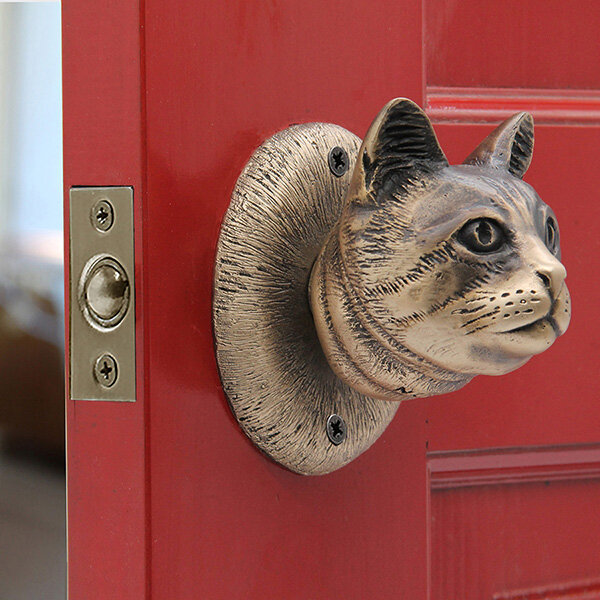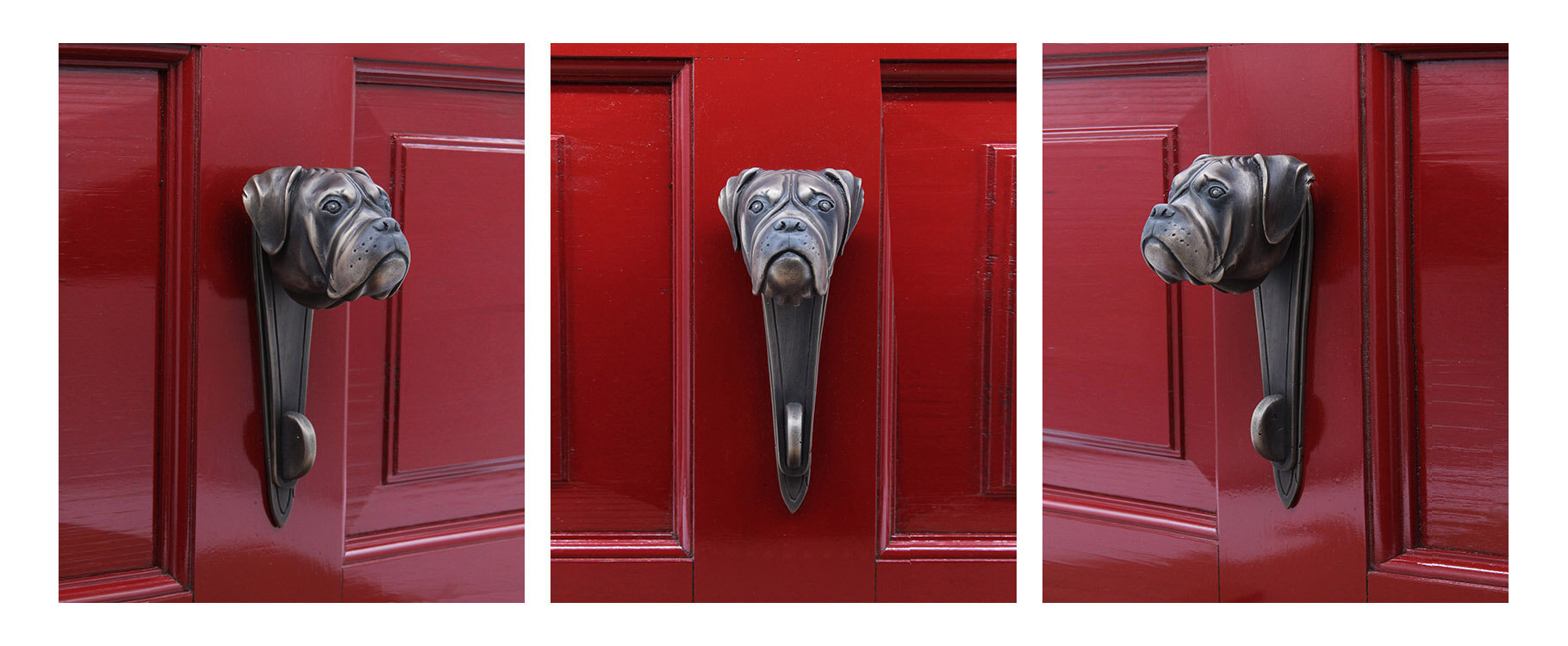The spindle is one continuous rod for a passage latch but is split into 2 sections for a privacy latch.
How a door knob works with a passageway latch
When a passageway door is closed it is held in place by the tongue of the latch that extends into the strike plate on the door jamb. Turning the knob clockwise or anti-clockwise retracts the latch pulling it out of the strike plate and into face-plate of the door. New doors are usually manufactured with a 2” hole for the latch and a drilled round channel for the latch-tongue. The end of the channel is typically finished with a rectangular cut out which is capped by a metal face-plate that comes with the door latch. If the door is bought with the jamb, then the rectangular hole for the strike plate will also be pre-cut.
A passage way latch has just one functioning cog wheel with flat areas and small 1/16” protruding teeth. Either knob can turn the spindle and in so doing turn the cog to a flat or protruding tooth section. The cog teeth put pressure on the latch and throw it forward into the jamb. In reality the latch sits in a small metal box, and both have springs which make for a smooth action that requires little hand pressure. When the spindle turns the cog to a flat section the pressure on the latch and compressed springs is released and the latch moves back and is retracted.
How a door knob works with a privacy push pin latch
















